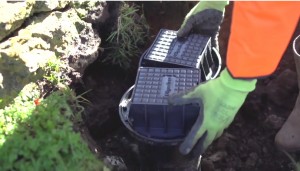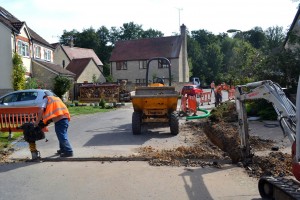Rockhampton to consider own FTTP network
Articles
Queensland council plans own optical fibre network | The Register
Council goes its own way on NBN, plans cables and telco | Morning Bulletin (Rockhampton, Queensland)
My Comments
Local government has been instrumental in improving broadband coverage for its citizens by encouraging the installation of the necessary infrastructure. This may be a public effort funded primarily by council taxes or rates that are levied on property owners; or it could be a public-private effort where a company also funds the same effort.
These efforts may be used as a method of providing data infrastructure between the local government’s buildings but they have been used to provide broadband infrastructure to citizens and businesses in that area in a manner that competes with established operators. It can also be about the establishment of a company or co-operative that is focused on providing telecommunications or Internet services to the local community.
But such services have raised the ire of incumbent telecommunications and cable-TV businesses and this has had the powerful incumbent operators in the USA like Comcast and AT&T lobby for state-level legislation to strangle community telecoms and Internet infrastructure projects.
Australia has taken a new stab at this effort with the local government that governs Rockhampton in Queensland putting forward the idea of high-speed fibre-to-the-premises infrastructure to cover the city’s central business district (downtown) area.
Rockhampton Regional Council’s mayor, Margaret Strelow showed dissatisfaction with the National Broadband Network heading down the fibre-copper path which would lead to substandard broadband. Instead the council established their own high-speed fibre-to-the-premises infrastructure in Quay Street alongside other council-owned road and water works. This is a “dig-once” effort to bypass the NBN in order to achieve that “smart-city” goal that Rockhampton wanted.
The council will own the infrastructure but create a local non-profit community telco who leases that infrastructure and sells telephony and Internet service to the local community. It is in a similar manner to how some other cities have provided utilities and telecommunications services to their communities.
A question that will be raised regarding these community-focused deployments will include the ability for the NBN or other next-generation-broadband infrastructure providers to build infrastructure parallel to this infrastructure; a practice that is described as “build-over”. This may allow Rockhampton or similar communities to benefit from infrastructure-level competition.
Another question that I also see raised is whether other retail-level telecommunications or Internet providers will be allowed to lease the council-supplied infrastructure in order to sell their services in to that town. This could allow consumers and businesses to benefit from retail-level communications-service and can also include mobile-telecommunications providers using this infrastructure as a backbone for their base stations.
As communities, ISPs, developers and other entities lay down their own infrastructure for their own next-generation broadband services, it could be a chance to raise the issues of “build-over” infrastructure-level competition for locations along with the ability for retail ISPs to compete with each other on the same infrastructure. If these issues are worked out properly, it could lead to increased value for money when it comes to broadband Internet service.

![Cotswolds hill and village picture courtesy of Glenluwin (Own work) [CC BY-SA 3.0 (http://creativecommons.org/licenses/by-sa/3.0)], via Wikimedia Commons](https://homenetworking01.info/wp-content/uploads/2015/06/Village_seen_from_a_mountain_in_the_Cotswolds_-_1983-300x196.jpg)



![York UK aerial view courtesy of DACP [CC BY-SA 2.0 (http://creativecommons.org/licenses/by-sa/2.0)], via Wikimedia Commons](https://homenetworking01.info/wp-content/uploads/2015/09/York_Aerial_view-300x225.jpg)


![US Flag By Dbenbenn, Zscout370, Jacobolus, Indolences, Technion. [Public domain], via Wikimedia Commons](https://homenetworking01.info/wp-content/uploads/2014/08/Flag_of_the_United_States.svg_-300x157.png)
